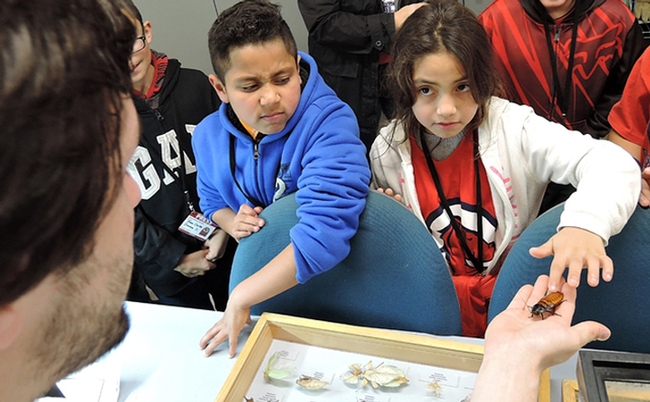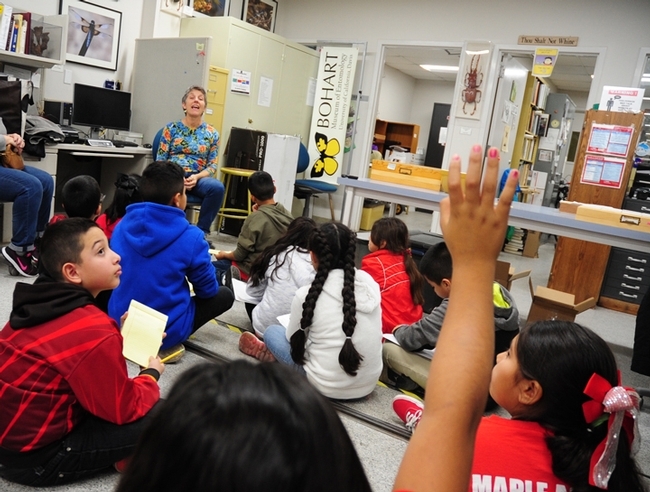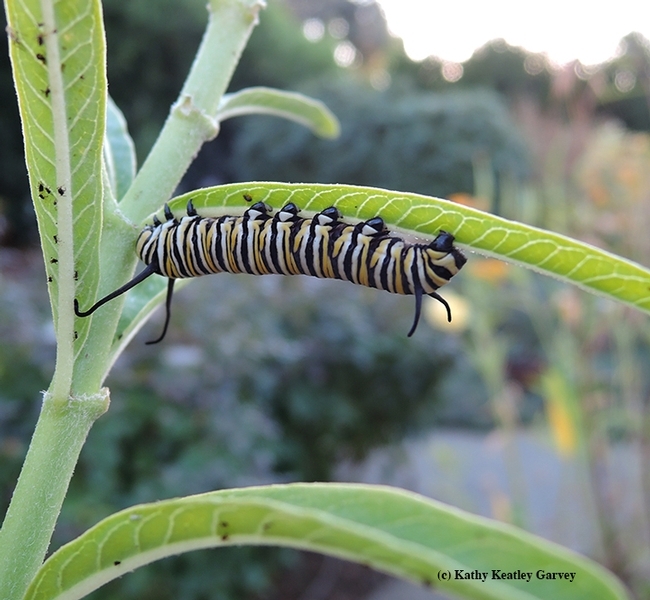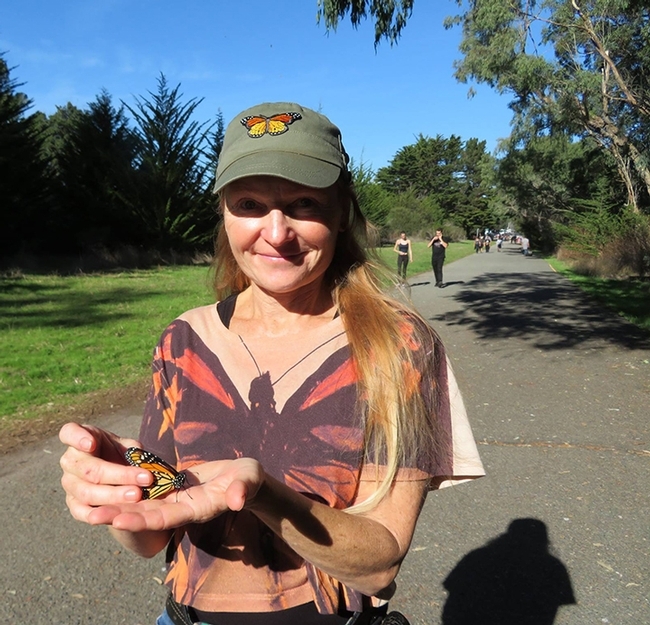- Author: Kathy Keatley Garvey
It's Day 2 of National Pollinator Week.
So, I guess I should "toot my own horn" (we don't have one, but in our household we do have a piano, a double bass, a guitar, a banjo, a ukulele, a dulcimer, a harmonica, a sousaphone, a set of hand drums, and two accordions. Note that the last one to play the piano well was the...um...cat).
Yours truly of the UC Davis Department of Entomology and Nematology, just won a silver award or second-place honors, in a photography competition hosted by the international Association for Communication Excellence in Agriculture, Natural Resources and Life and Human Sciences (ACE). ACE announced the awards today (June 22) at its virtual conference.
To draw attention to the plight of monarchs, I captured (with a Canon MPE-65mm lens) an image of a monarch egg in our family's pollinator garden where we create habitat for assorted bees and butterflies and other pollinators.
“The purpose of my image is to draw attention to the dwindling monarch butterfly population,” I wrote on the form. “They are on life support.” The Xerces Society for Invertebrate Conservation's reports that overwintering monarchs have declined 99 percent in coastal California since the 1990s.
I posted the image at https://bit.ly/3cUx358 Aug. 10, 2020 on my daily (Monday-Friday) Bug Squad blog on the UC Agriculture and Natural Resources website.
Wrote the judge: “Capturing a subject this small is really quite impressive. I appreciate the photographer sharing their equipment and process to capture this image of such a delicate and beautiful little butterfly egg. Very well done.”
The image scored 25 out of 25 points in creativity/originality, audience interest/impact, and overall evaluation.
The egg, I commented, is “an incredible work of nature! The intricate egg is about the size of a pinhead, 0.9mm wide and 1.2mm high. It's creamy yellow with narrow longitudinal ridge. Unless it encounters a predator or parasitoid or another life-threatening factor, the egg will usually hatch 3 to 4 days after Mama Monarch deposits it beneath a milkweed leaf.”
“A good place to see butterfly specimens from all over the world is at the Bohart Museum of Entomology (now temporarily closed due to the COVID-19 pandemic)," I added. “Of the nearly eight million specimens in the Bohart, some 500,000 are in the Lepidoptera collection, curated by entomologist Jeff Smith.“ I also drew attention to the butterfly-rearing process of Bohart associate and natural historian Greg Kareofelas.
In addition to the silver award, yours truly won a bronze award or third-place honors for my image of a photo series of male and female Gulf Fritillaries, Agraulis vanillae, “keeping busy.” The Bug Squad post, “Fifty Shades of Orange, with a Touch of Silver,” appeared July 13, 2020 at https://bit.ly/2Q6cU3q.
Wrote the judge: “This submission was a delight! I adored the written piece that accompanied the photos, describing the insect wedding during COVID times. To take notice of these delicate creatures, which many people just pass by without noticing, and to document them in photos is unique…. When photographing subjects of this size, the tack-sharp focus which captures the details that our eyes cannot normally see is what makes them so captivating. It's also incredibly difficult to capture--the photographer did a lovely job.”
“So there they were," I wrote. "The two of them. The blushing bride and the quite dapper-and-dashing groom. They didn't invite me to their wedding. I was an uninvited guest, the only guest. So, I felt obliged to crash their wedding and capture some images…Who can resist insect wedding photography? That's about the only wedding photography happening during the COVID-19 pandemic.”
I also drew readers to the research website of butterfly guru Art Shapiro, UC Davis distinguished professor of evolution and ecology, and his information on A. vanillae, (see https://bit.ly/3uw9Yf1) and to specific work of insects “keeping busy” (see https://bit.ly/3rVU1xg) by UC Davis alumnus and renowned macro photographer Alex Wild, curator of entomology at the University of Texas, Austin.
ACE, founded in 1913 primarily for ag communicators, is now an international association of professionals who practice in all areas of communication.
(Editor's Note: Last year, three UC Davis-affiliated communication specialists won a total of six writing or photography awards in the ACE global competition for their work accomplished in 2019 (pre-COVID pandemic). Steve Elliott, communications coordinator for the Western Integrated Pest Management Center, Davis, won one silver (second-place) and two bronze (third-place) for his writing and photography; Kathy Keatley Garvey, communications specialist for the UC Davis Department of Entomology and Nematology, two silvers for her writing and photography; and Diane Nelson, communication specialist for the UC Davis College of Agricultural and Environmental Sciences, won a bronze for her writing.)
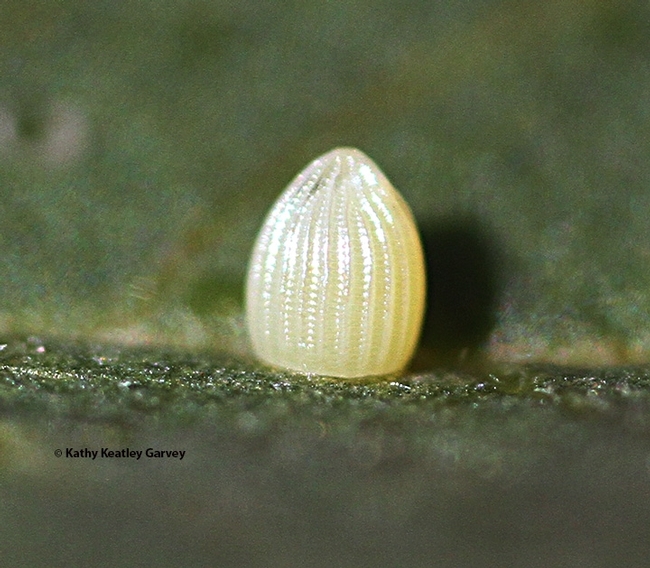
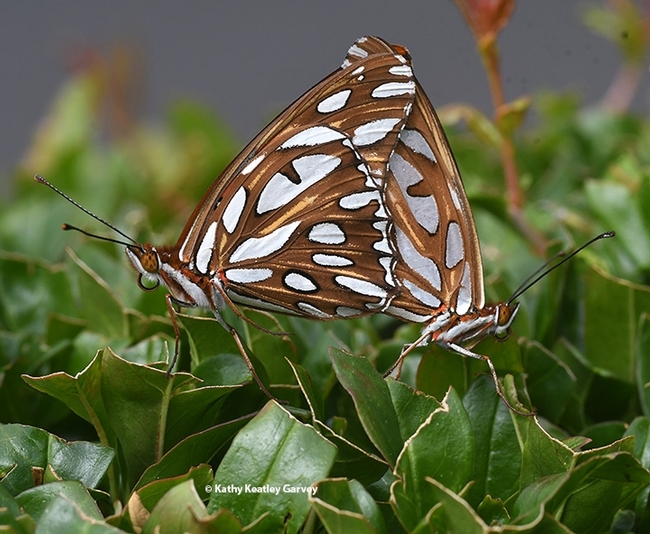
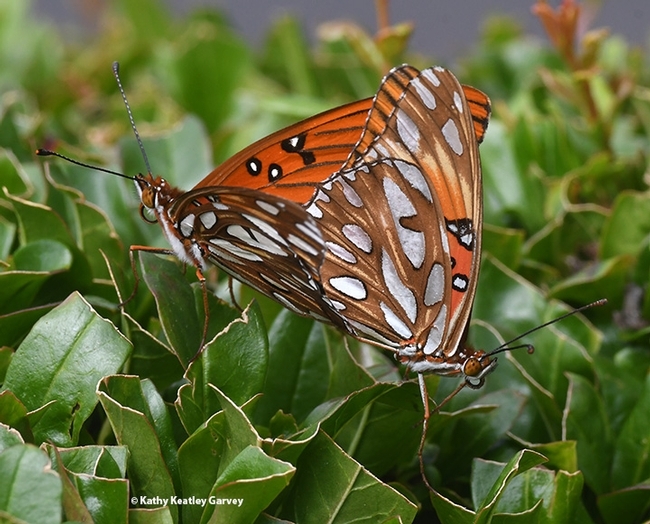
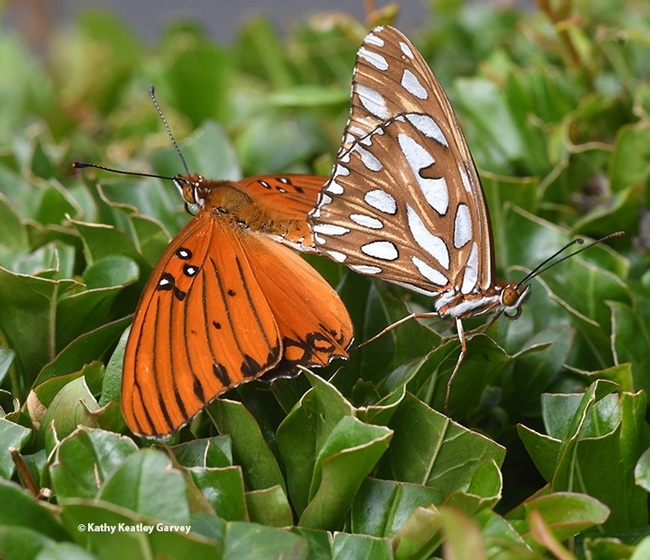
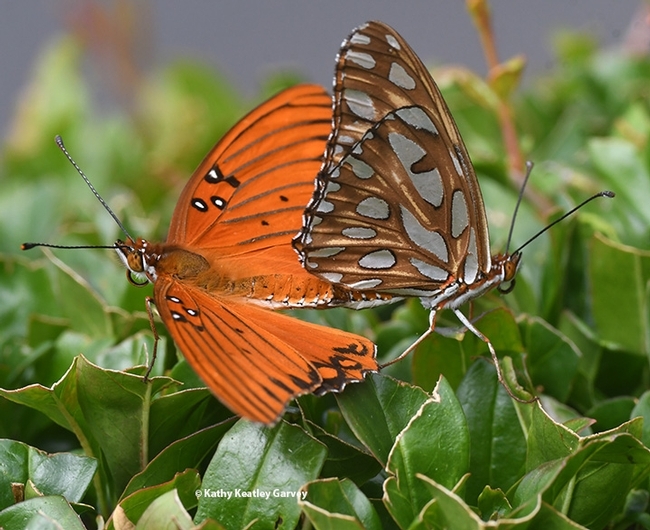
- Author: Kathy Keatley Garvey

Together they won a total of seven communication awards in a competition hosted by the international Association for Communication Excellence in Agriculture, Natural Resources and Life and Human Sciences (ACE).
Steve Elliott, communications coordinator for the Western Integrated Pest Management Center, Davis, won one silver (second-place) and two bronze (third-place) for his writing and photography;
- Writing for the Web, silver award for “IPM in Yellowstone”
- Photo Essay, bronze award for “Growing in Guam”
- Social media, bronze award for single blog post, “To Communicate Better, Start with Audience”
Kathy Keatley Garvey, communications specialist for the UC Davis Department of Entomology and Nematology, won two silvers for her writing and photography;
- Writing for Newspapers, silver award for “Paying It Forward,” about the successful career of award-winning academic advisor Elvira Galvan Hack
- Picture Story, silver award for “Kira Meets a Stick Insect” (at Bohart Museum of Entomology)
Diane Nelson, communication specialist for the UC Davis College of Agricultural and Environmental Sciences, won a bronze for her writing:
- Writing for the Web, bronze award for "Can Science Save Citrus?"
Ricardo Vela, Miguel Sanchez and Norma de la Vega of UC ANR's News and Information Outreach in Spanish won a bronze award for a video:
- Diversity 6, Electronic Media and Audio for Targeted Audiences, bronze award for Breakfast - Desayuno de Campeones - English and Spanish videos
The awards will be presented Wednesday, June 24 during ACE's virtual conference, which opened June 22 and continues through June 25.
ACE is an international association of communicators, educators and information technologists who focus on communicating research-based information. The organization offers professional development and networking for individuals who extend knowledge about agriculture, natural resources, and life and human sciences.
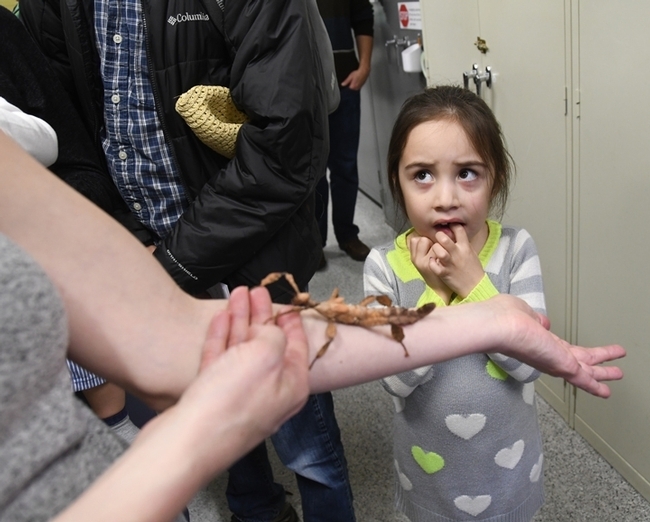

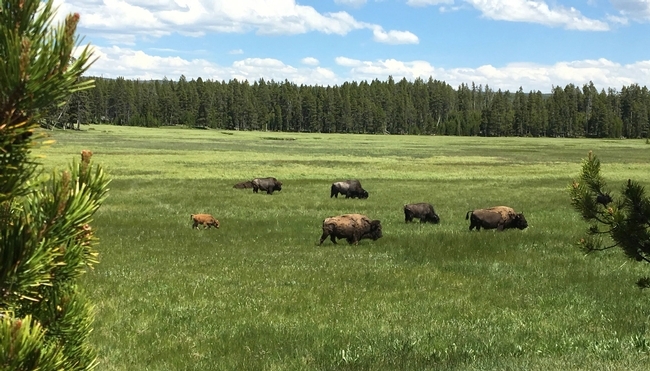
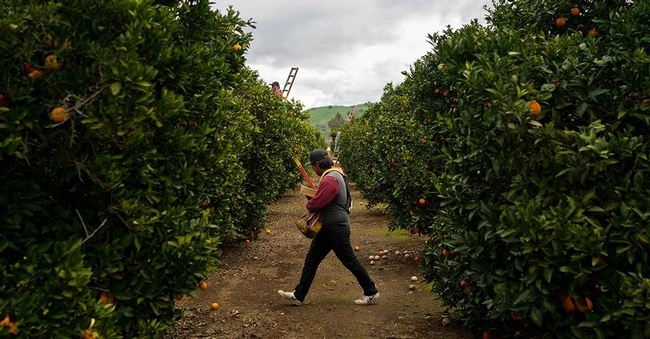
- Author: Kathy Keatley Garvey

Five entomology-related entries from UC Davis won awards. They involved an administrative tour of the Bohart Museum of Entomology; the publication of the first-ever Bohart Museum calendar; "Bee Man" Norm Gary, UC Davis emeritus professor of entomology; the UC Davis Picnic Day performance of "The Entomology Band" comprised of UC Davis graduate students; and an image of a honey bee covered with mustard pollen.
The piece on the Bohart tour chronicled the visit of UC Davis Chancellor Gary May and Dean Helene Dillard of the UC Davis College of Agricultural and Environmental Sciences. Director Lynn Kimsey, UC Davis professor of entomology, discussed the teaching, education and public service underway at the museum, home of nearly eight million insect specimens, plus a gift shop and live "petting zoo."
Chancellor May and Dean Dillard expressed a strong interest in the science: the specimens, scientists and research. But the live petting zoo containing Madagascar hissing cockroaches, walking sticks (stick insects) and tarantulas? Not so much.
The news coverage, however, scored a gold award (first place) in the ACE competition. Judges lauded the coverage by yours truly (Kathy Keatley Garvey, communications specialist, UC Davis Department of Entomology and Nematology), as "great work, nice coverage" but commented that the chancellor and dean weren't too "keen on interacting with the insects." (No, they did not ask to cuddle a cockroach!)
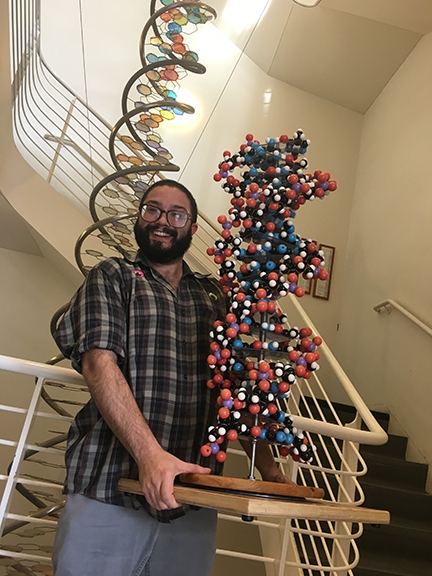
Communications coordinator Steve Elliott of the Western Integrated Pest Management Center won four awards, including two golds:
- A gold award for writing for the web for his "Preparing for the Invasion: Emerald Ash Borer in Colorado" (See entry: https://bit.ly/2YBaRTT)
- A gold award for writing within a specialized publications for “Learning to Manage – and Live with – Coyotes in Southern California.” (See entry: https://bit.ly/2LLFjZY)
- A silver award (second place) for the center's electronic newsletter, highlighting integrated pest management research, issues, funding opportunities, jobs and meetings each month. Issues available at (See entry: https://bit.ly/2M5mL6s)
- A bronze award (third place), with Will Suckow, for the Western IPM Center website (www.westernipm.org)
Science writer Gregory Watry of the College of Biological Sciences won a silver award in the promotional writing category for his story, ‘Feeding the Future: Growing Stronger Crops.” (Entry: https://bit.ly/2vZYZyz)
Kathy Keatley Garvey also won several other entomology-related awards:
- A silver award for a feature photo of a honey bee covered with mustard pollen. (Entry: https://bit.ly/2I82fi2)
- A bronze award (third place) for "The Bee Man" newspaper story on Norm Gary, emeritus professor of entomology, book author, and retired bee wrangler (Entry: https://bit.ly/2w3yW9m)
- A bronze award for writing within a specialized publication. "Bugs and Beats," published in Entomology Today, a publication of the Entomological Society of America, featured "The Entomology Band" of UC Davis graduate students (Entry: https://bit.ly/2JHIfEa)
- A bronze award for the Bug Squad blog, "When Queen Bees Get Permanents," showcasing the art of Karissa Merritt, UC Davis entomology student, in a Bohart Museum calendar and the humorous writings of students in Lynn Kimsey classes (Entry: https://bit.ly/2BWV7Ch)
ACE, headquartered in Morton Grove, Ill., and founded in 1913, is a non-profit international association of communications, educators and information technologists.
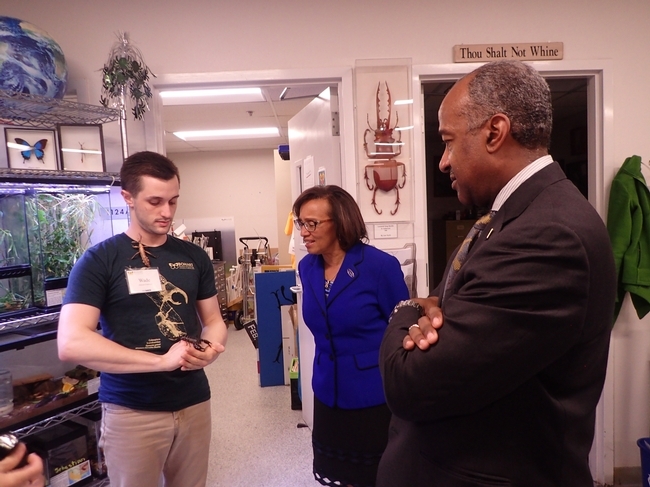
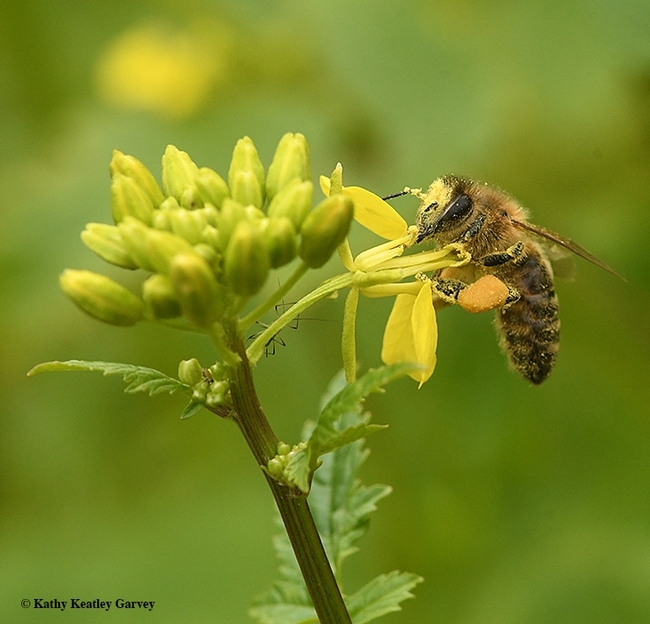
- Author: Kathy Keatley Garvey
They brought home five gold or first-place awards: three silver or second-place awards; and two bronze or third-place awards. “That was quite a haul!” commented an ACE member on Facebook.
The recipients:
- Diane Nelson, College of Agricultural and Environmental Sciences, two golds
- Kathy Keatley Garvey, Department of Entomology and Nematology, one gold and one silver
- Jim Downing, California Agriculture journal, gold
- David Slipher, College of Biological Sciences, gold
- Steve Elliott, Western IPM Center, two silvers and a bronze
- Gregory Watry, College of Biological Sciences, bronze
Nelson wrote about pig personalities and polar bears. Slipher's topic was pigeons. (See other topics in the awards news story)
And me--bugs. The news story that won the gold (by yours truly) involved a visit to the Bohart Museum of Entomology by children of California migratory workers.
The piece, “Why These Youngsters Want to Become Entomologists” (https://bit.ly/2sYwhye) covered the children's tour of the insect museum, which houses some eight million insect specimens, a live "petting zoo" (Madagascar hissing cockroaches, walking sticks, tarantulas and praying mantids), and a year around-gift shop. The students engaged the director, Lynn Kimsey, professor of entomology at UC Davis, in a press conference. They asked the "who, what, when, where and how come" questions like pros. It was delightful to see them so well prepared and perceptive.
The Bug Squad blog that won silver (https://bit.ly/2BrePU5) involved a late-season monarch caterpillar that we found Oct. 27, 2017 on one of our milkweeds in our pollinator garden in Vacaville. It formed a chrysalis on Nov. 4.
On Day 19, Nov. 22 (the day before Thanksgiving), it happened. The monarch eclosed. A big, strong and healthy girl.
What to do...no way could she fly three hours in the rain and cold from Vacaville to an overwintering site in Santa Cruz. And with predators abounding, survival looked bleak.
From the Bug Squad blog:
"It just so happened that a friend and pollinator advocate, Rita LeRoy, the self-described 'farm keeper' at the Vallejo City Unified School District's Loma Vista Farm, was heading to Santa Cruz on Friday, the day after Thanksgiving, to show her out-of-town relatives the overwintering migratory butterfly sanctuary at the Natural Bridges State Beach Park. That's about a 100-mile trip from Vallejo.
"Could Ms. Monarch hitch a ride?
"She could. And she did."
Rita is a Monarch Mom (she rears and releases monarchs) and is active in the Bay Area-Based Pollinator Posse. She teaches Vallejo City Unified School District youngsters about farming, cooking and gardening. And that includes gardening for butterflies.
So Ms. Vacaville Monarch hitched a ride with Rita and her family.
"She flew so fast that we didn't get a picture of her flying away," Rita related. "She was anxious to join her new friends."
A happy ending.
And hopefully, Ms. Vacaville Monarch provided the butterfly world with another generation.
